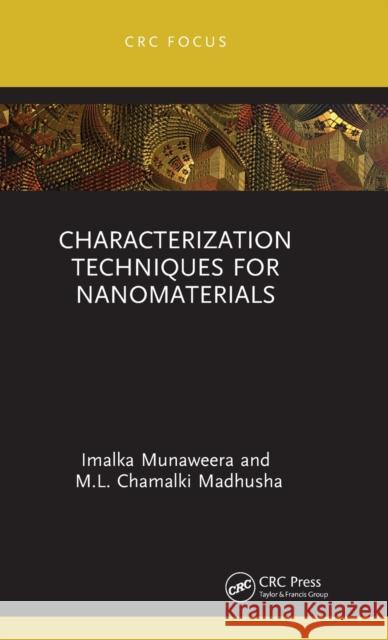Characterization Techniques for Nanomaterials » książka
Characterization Techniques for Nanomaterials
ISBN-13: 9781032406619 / Angielski / Twarda / 2023 / 128 str.
Characterization Techniques for Nanomaterials
ISBN-13: 9781032406619 / Angielski / Twarda / 2023 / 128 str.
(netto: 248,38 VAT: 5%)
Najniższa cena z 30 dni: 251,82 zł
ok. 16-18 dni roboczych.
Darmowa dostawa!
Manipulation of matter at the nanoscale level is the key factor in nanotechnology, and it is considered as a great driving force behind the current industrial revolution since it offers facile and feasible remedies for many problems. Because of the unique characteristic properties of nanomaterials, they can be employed in a wide variety of fields such as agriculture and food technology, catalysis, biomedical applications, tissue culture engineering, and fertilizers. In this regard, characterization of nanomaterials plays a significant role in determining their optical, thermal, and physicochemical properties. Many techniques have been used in nanomaterial characterization, and the most important techniques are discussed in detail in this book with their principles, basic operation procedures, and applications with suitable examples. In summary, this book offers broad content on the most important chemical and structural characterization techniques of nanomaterials.The book offers comprehensive coverage of the most essential topics, including the following:Provides a comprehensive understanding of physical and chemical characterization techniques of nanomaterialsIncludes details about basic principles of each characterization technique with appropriate examplesCovers most of the important characterization techniques that should be known to undergraduate/early career scientists/beginners in materials chemistryProvides all the basic knowledge to understand and carry out the respective analysis of nanomaterialsFulfills the timely need of a book that covers the most important and useful characterization techniques in nanomaterial characterizationUp to date, there are no other books/book chapters which discuss most of these nanocharacterization techniques in one segment with all the basic instrumentation details and narrated examples of nanomaterial characterization. In a nutshell, this book will be a great asset to undergraduates/early career scientists/beginners of material science as it provides a comprehensive and complete understanding of most of the techniques used in nanocharacterization tools in a short time. Intended audience is based on science education while specifically focusing on undergraduates/graduate students/early scientists and beginners of chemistry, materials chemistry, and nanotechnology and nanoscience.
Manipulation of matter at the nanoscale level is the key factor in nanotechnology, and it is considered as a great driving force behind the current industrial revolution since it offers facile and feasible remedies for many problems. Because of the unique characteristic properties of nanomaterials, they can be employed in a wide variety of fields such as agriculture and food technology, catalysis, biomedical applications, tissue culture engineering, and fertilizers. In this regard, characterization of nanomaterials plays a significant role in determining their optical, thermal, and physicochemical properties. Many techniques have been used in nanomaterial characterization, and the most important techniques are discussed in detail in this book with their principles, basic operation procedures, and applications with suitable examples. In summary, this book offers broad content on the most important chemical and structural characterization techniques of nanomaterials.
The book offers comprehensive coverage of the most essential topics, including the following:
- Provides a comprehensive understanding of physical and chemical characterization techniques of nanomaterials
- Includes details about basic principles of each characterization technique with appropriate examples
- Covers most of the important characterization techniques that should be known to undergraduate/early career scientists/beginners in materials chemistry
- Provides all the basic knowledge to understand and carry out the respective analysis of nanomaterials
- Fulfills the timely need of a book that covers the most important and useful characterization techniques in nanomaterial characterization
Up to date, there are no other books/book chapters which discuss most of these nanocharacterization techniques in one segment with all the basic instrumentation details and narrated examples of nanomaterial characterization. In a nutshell, this book will be a great asset to undergraduates/early career scientists/beginners of material science as it provides a comprehensive and complete understanding of most of the techniques used in nanocharacterization tools in a short time. Intended audience is based on science education while specifically focusing on undergraduates/graduate students/early scientists and beginners of chemistry, materials chemistry, and nanotechnology and nanoscience.











